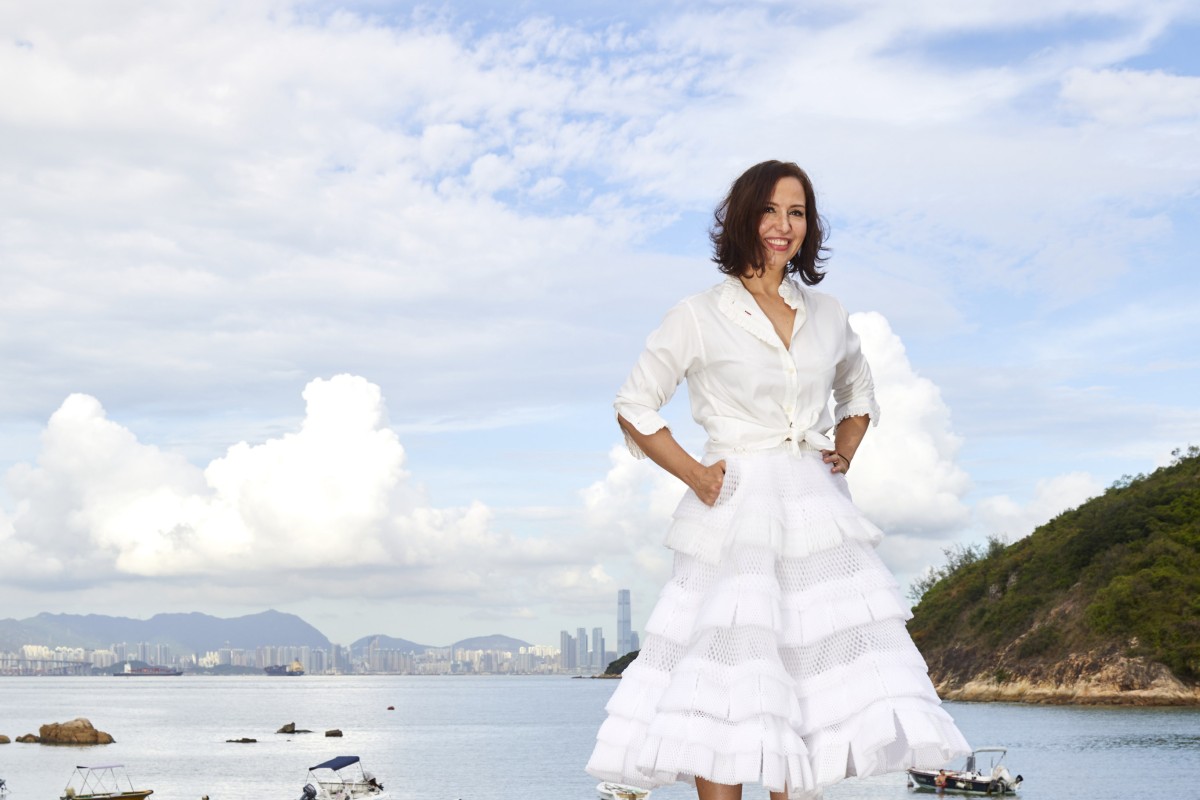
Study Buddy (Explorer): Eco-friendly advocate hasn’t bought new clothes in 4 years and has no regrets
- Each week, Study Buddy Explorer presents an interesting story that we have adjusted to be more accessible for all English learners
- Check your reading comprehension using the questions below or in the linked Kahoot! game
 Tanja Wessels is an environmental advocate who now only buys second-hand clothing. Photo: Alex Macro
Tanja Wessels is an environmental advocate who now only buys second-hand clothing. Photo: Alex MacroContent provided by the British Council
Read the following text and answer questions 1-9 below:
[1] Tanja Wessels is an environmental advocate. She talks to South China Morning Post’s Kylie Knott about her passion for environmentalism and sustainable fashion.
[2] Knott: Tell me a bit about yourself and your eco journey.
Wessels: I spent most of my childhood eating dirt and climbing trees, so the value of nature was always clear to me. From leaves to lizards, flowers to foxes, we are all connected. In 2017, I started feeling panicky and confused by the headlines about climate change and what I saw happening. If the environment was in such a fragile state, why were we all consuming so much and ignoring the warning signs? Why didn’t anyone care?
[3] I would later understand that I was experiencing eco-anxiety, an overwhelming fear of environmental doom. It helped me frame what I was feeling in a more productive way. It also gave me the tools to help others experiencing their own version of that.
[4] Knott: Is it true you have not bought new clothes for four years?
Wessels: Absolutely true! In 2017, I attended a podcast recording with Christina Dean, the founder of Hong Kong NGO Redress. Christina was discussing only wearing clothing from rubbish bins for a year. I thought if someone so elegant could experiment like that in a city as conservative as Hong Kong, I should give it a shot.
[5] I gave myself one year of wearing only second-hand clothing ... Now, it’s become a way of life, though I could never have anticipated how it would shift the way I look at the world.
[6] Knott: Buying from second-hand shops is looked down upon in some places. How can we move past this?
Wessels: Question why we have that feeling and rebel against it. It often comes from an innocent place, like being concerned about hygiene. [But] if you push someone to think about this, a gentle wash can address that.
[7] Clothes in a [typical] shop aren’t that hygienic, either. People would be surprised to learn that many new garments get piled up on warehouse and shop floors. Many textile [factories] use toxic chemicals which are harmful to our health. Second-hand needs a massive rebranding moment: it should be normal and cool to walk into a charity shop and find an outfit that gets people talking!
[8] Knott: What advice can you share on being a sustainable consumer?
Wessels: There’s so much misleading information about which products are environmentally sound. It is little wonder people feel overwhelmed and confused. Things to look out for include vague claims without evidence to back them up. Be sure to ... do your own research.
[9] If this sounds like too much overhead, consider not making the purchase at all. Anything that exists in this world took resources to produce, no matter how sustainable it is. The most sustainable option is to buy less.
Source: South China Morning Post, January 14
Questions
Play a Kahoot! game about this story as a class or with your friends by clicking on the link here.
Or play on your own below to test your understanding:
1. List two things from paragraph 1 that Wessels is passionate about. (2 marks)
2. What was Wessels having difficulty understanding according to paragraph 2? (2 marks)
3. What is “eco-anxiety”?
A. fear of animal extinction
B. fear of environmental disaster
C. fear of being in nature
D. all of the above
4. According to paragraphs 5 and 6, where does Wessels likely get her clothes from?
5. What does the “way of life” in paragraph 5 refer to?
A. wearing second-hand clothes
B. listening to podcasts
C. posting her outfit of the day on social media
D. selling her second-hand clothes
6. Read paragraphs 6 and 7, and decide if the following statements are True, False or Not Given.
(i) Clothes from brand-new shops are always cleaner than those from second-hand stores.
(ii) Some people reject second-hand clothing because they think garments worn by others are dirty.
(iii) New clothing items contain more toxic chemicals as compared to second-hand garments.
(iv) Many believe it is uncool to buy from charity shops.
7. Find a word in paragraph 7 that means “clothes”.
8. Which of the following suggestions for sustainable shopping are mentioned in paragraphs 8 and 9? Tick the correct answers. (3 marks)
A. Do research on companies that claim to be sustainable.
B. Buy more second-hand clothes.
C. When products claim to be eco-friendly, make sure they provide proof to support what they say.
D. Buy less clothing even if they are sustainably made.
E. Only buy clothes that are mass-produced at low cost.
F. Only buy from companies that say they use recycled materials for their clothing.
9. According to paragraph 9, what should people do if they are still unsure about whether a company’s products are environmentally sound even after doing research on them?
Answers
1. environmentalism and sustainable fashion
2. She was confused about why people were still consuming so much and ignoring warning signs even as the headlines about climate change said the environment was in a fragile state.
3. B
4. She gets them at second-hand shops.
5. A
6. (i) F; (ii) T; (iii) NG; (iv) T
7. garments
8. A; C; D
9. They should not buy the products.
